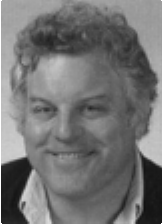
Robert B. Laughlin and the Fractional Quantum Hall Effect Photo Courtesy of LLNL · Resources with Additional Information Robert B. Laughlin shared the 1998 Nobel Prize in Physics with Horst L. Störmer and Daniel C. Tsui for 'their discovery of a new form of quantum fluid with fractionally charged excitations'. ' ... [I]n 1982 ... Störmer and Tsui discovered the effect. In 1983, Laughlin, then at the Lawrence Livermore National Laboratory, provided the theoretical explanation of the effect in terms of fractionally charged particles. It was a "confluence of things from engineering that prepared me for understanding the fractional quantum Hall effect and coming up with an explanation," Laughlin said during a television interview at Stanford. ... In 1982, Störmer and Tsui, working with extremely pure semiconductor samples, discovered additional fractional quantized resistance values. These fractional values discovered always had odd denominators. This discovery came as a great surprise. It was known from the outset that the fractional quantum Hall effect could not be explained without dealing with inter-electron interactions in the sample. Initially, a theoretical explanation was not forthcoming. In 1983, Laughlin developed a theoretical picture of the phenomenon, even writing down an explicit multi-particle wave function. His theory predicted that the fractional quantum Hall effect was caused by the capture of an odd-number of fundamental units of magnetic flux by each electron, as opposed to a single unit of flux in the integer quantum Hall effect.'1 ' “My presence at Livermore was crucial to my work,” says Laughlin. In particular, he gives credit to Livermore colleagues for aiding him in his intellectual struggle to explain a most peculiar aspect of physics. “My colleagues helped me significantly,” he says. “I owe the Laboratory a great deal.” '2 'Laughlin's theory predicted a new form of quantum-mechanical fluid. He also predicted that the elementary excitations of the fluid involve pseudo-particle charge carriers with charges that are fractions of the electronic charge.'1 Laughlin received the E. O. Lawrence Award from the U.S. Department of Energy in 1984. 1Edited excerpt from MIT Graduate Wins Nobel Prize for Hall Effect Theory Advances
2Edited excerpt from Nobel Prize Top Resources with Additional InformationAdditional information about Robert Laughlin and his research is available in full-text and on the Web. Documents:
Anomalous
Quantum Hall Effect: An Incompressible Quantum Fluid with Fractionally Charged
Excitations; Physical Review Letters, Vol. 50, Issue
18: 1395-1398, May 2, 1983
Quantized Motion of Three Two-dimensional Electrons in a Strong Magnetic Field; Physical Review B, Vol. 27, Issue 6: 3383-3389, March 15, 1983 Fractional Quantization of the Hall Effect, DOE Technical Report, February 27, 1984 Excitons in the Fractional Quantum Hall Effect, DOE Technical Report, September 1984 Quasiparticle Aggregation in the Fractional Quantum Hall Effect, DOE Technical Report, October 10, 1984 Destruction of the Fractional Quantum Hall Effect by Disorder, DOE Technical Report, July, 1985 Scaling of Conductivities in the Fractional Quantum Hall Effect; Physical Review B, Vol. 32, Issue 2: 1311-1314, July 15, 1985 Additional Web Pages:Robert B. Laughlin: Research Interests, Stanford University 1998 Nobel Prize Winner Laughlin Credits Livermore Colleagues Robert Laughlin Awarded 1998 Nobel Prize in Physics, LLNL Robert Laughlin, Anne T. and Robert M. Bass Professor in the School of Humanities and Sciences, Stanford University |


 |
Information
Bridge • Energy
Citations Database • E-print
Network • R&D
Accomplishments
About OSTI Science.gov • USA.gov • USAJOBS • Grants • Regulations.gov |
|---|